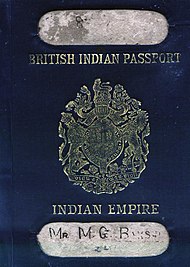Introduction
At dawn of civilization, man was born free and could travel to any place as he liked. The entire world was a big forest with no national boundaries. The only limitation was absence of modern means of transport and communication. A man could move in any direction as far as his legs would permit. But as means of transport and communication developed, kindgoms and national or state boundaries came in existence, nationality of individuals conceptualized, system of ownership and possession of land got established ; freedom ended. Man was no more a world citizen. He was chained to small regional states. He was 'foreign' everywhere except the 'country of his birth'.
The pitiable state of human beings chained to national boundaries is well expressed in the song of the movie- Refugee. 'Yeh nadia, yeh panchhi, yeh pawan ke jhonke- inhe koi sarhad na roke- socho mene aur tumne kiya paya insaan hoke' (There is no barrier to stream, birds and breeze- no boundary for them- Just think- what we humans gained."
The issue of passport is rooted in confinement of man to communities, clans and nations. There have been conflicts among communities and clans. The famous love story of Laila and majnoo is in fact rooted in clan conflict. Both lovers belonged to clans inimical to each other and hence they faced obstacle in their relation. Not only humans, even some species of animals recognize territorial limitations. The dogs do not let others of their specie to enter their zone. It is said that a dog cannot go to bathe in Ganges for this reason.
While ordinary citizens did not need any document to visit any place, it was so necessary for purpose of trade. So trader would bring a letter from his king and also offer gift to the king of the territory that he landed. Such gifts from traders of other territories became customary and this is what gave rise to 'customs duty' which is earliest form of taxation.
The fact of being in protection of a king while in other territory is the main purpose of passport.
The first passport
There is mention of passport type document in Bible. Essentially, passport is a travel document. First passport was made at the besest of Henry V of England. Holder of the document was identifiable as English. There were some walled cities. The Passport enabled an individual to enter the city. It is believed that the word 'passport' has some relevance to 'porte' or gate of city walls. An earlier example related to Persian King Artaxes. He gave a letter to prophet Nehemiah therein requesting governors beyond Euphrates to give him safe passage to visit Judah. The prophet had a mission to build walls of Jeruselam.
From 1540, the passports in England were issued by Privy council. Later this task was assigned to Secretary of state. Passports in other countries also follow more or less the British system. The need for passport actually was not felt. This only facilitated to prove identity. But this document became essential after the first world war. Really the first British passport as this is understood today was issued only after 1914.
Passport in British India
As stated earlier in the article, the passport as known today is in vogue after the first world war. Uniform format of passport form by all nations was adopted by League of Nations International conference on Passports in 1920. The passport was issued as proof to subjects of British empire covering the existing countries- India, Pakistan, Bangladesh and Burma (now Mynamar). The passport was in blue and issued in name of Indian Empire and the words 'British India' inscribed on the passport. The passports were issued by provincial governments. One rupee was charged for issue of passports. In 1933, the price of passport was raised to Rupees three. This was valid for five years. The passport contained individual details of the passport holder. The passport was valid in British empire and some other countries including Italy, France, Germany, Switzerland. The passport contained note containing request by the viceroy & Governor General to allow free movement and facility to holder of document. After Independence of India, the issue pf passport by British Government was discontinued. The passport holders had option to opt for Indian, Pakistan or British nationality.
Passport in Independent India

Presently, Ministry of External affairs is empowered to issue passports to citizens of India. every citizen can apply for passport. This is a travel document as well as an identity proof. There are various centers for issue of this document. There is also facility for online application of passport. There is regular passport in blue color for business and travel. Other categories are diplomatic (maroon color) and official (white color). The passport contains a note by Indian Government identifying the holder thereof as Indian citizen and requesting for smooth travel facility in all states. It may be added that mere passport may not entitle one to travel everywhere. Some countries also issue Visa that entitles one to travel in that country. The visa is stamped on passport itself. It may be relevant to point out that Chinese action of issuing a staple visa created controversy.
conclusion
Needless to say that division of world in different nations is a fact. There are many sovereign nations. A passport today establishes identity of a citizen of a nation. This is not a mere travel document. Everyone should apply for a passport even if does not need to travel to another country.
Images are from wikipedia
